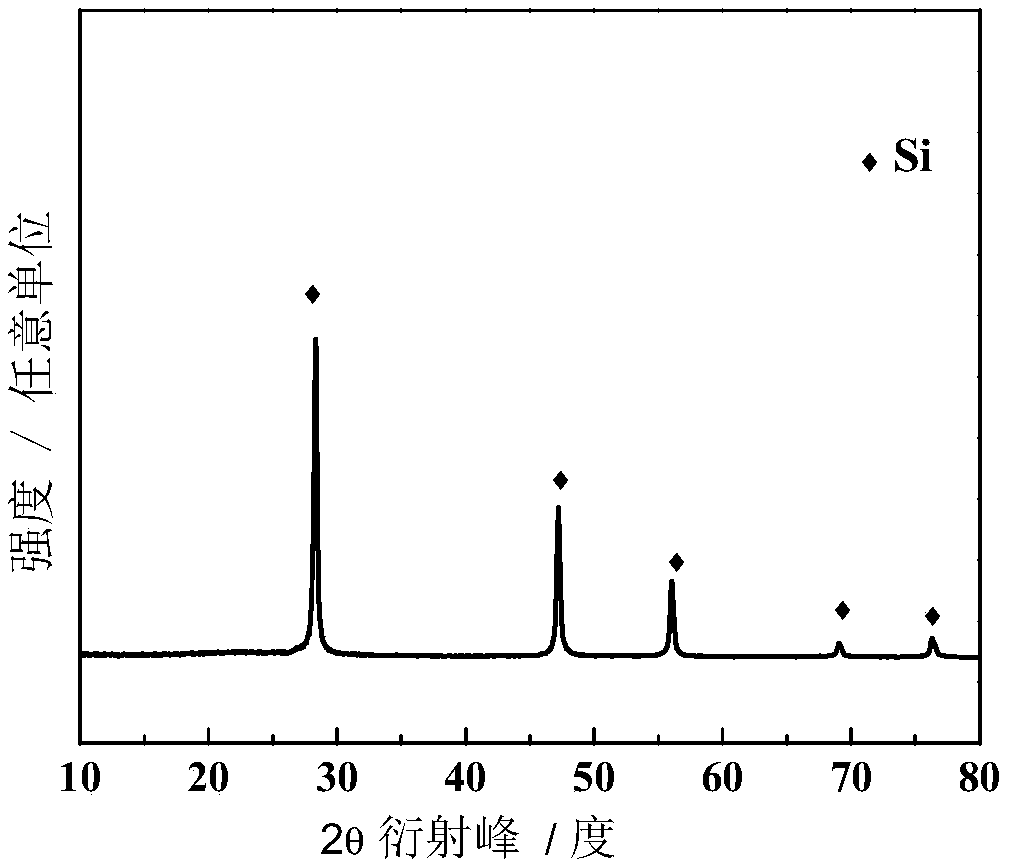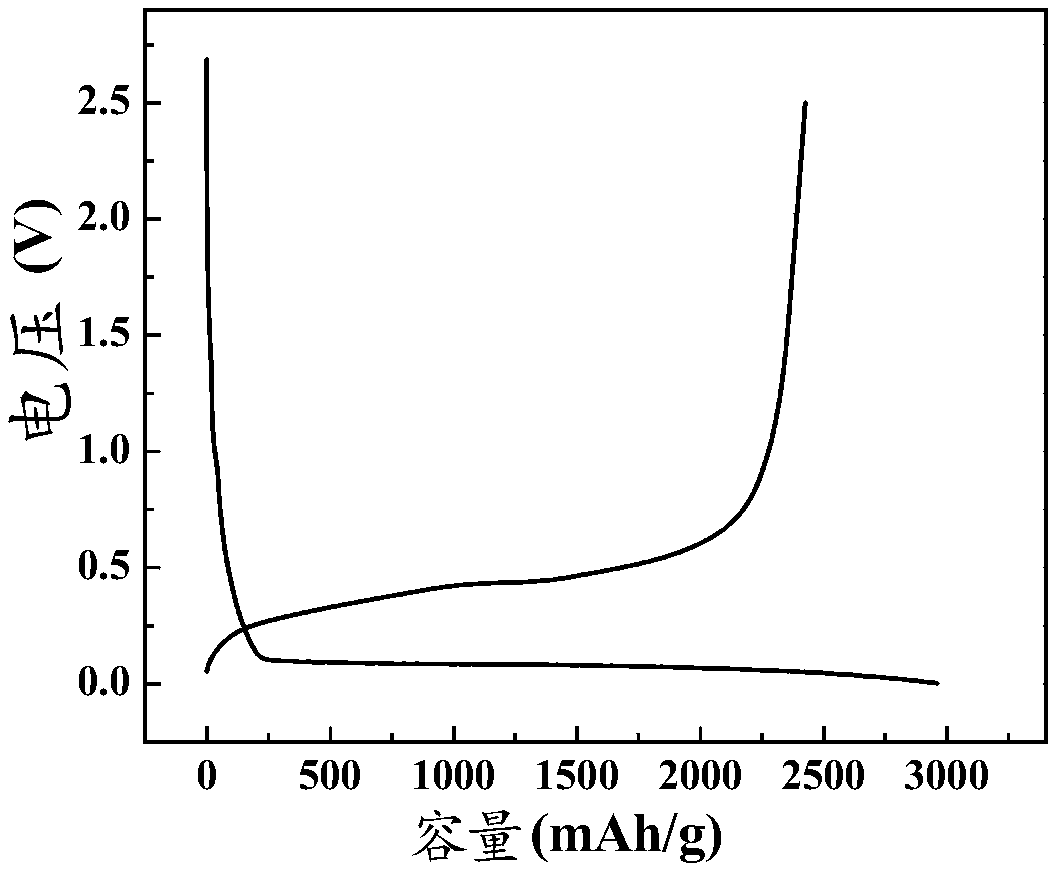Nano silicon-based material, and preparation method and application thereof
A nano-silicon, base material technology, applied in electrical components, battery electrodes, circuits, etc., to achieve the effects of low cost, short cycle, and reduced contact
- Summary
- Abstract
- Description
- Claims
- Application Information
AI Technical Summary
Problems solved by technology
Method used
Image
Examples
Embodiment 1
[0042] A preparation method of nano-silicon-based material, comprising the following steps:
[0043] 1) Mix the commercial crude silicon and sulfur powder evenly at a molar ratio of 1:2.05, seal them in a quartz tube under an argon atmosphere, then place the quartz tube in a tube furnace, and heat up to 1100°C, and kept at this temperature for 10 hours to obtain silicon sulfide;
[0044] 2) then the silicon sulfide prepared in step 1) is mixed with magnesium powder and sodium chloride through ball milling, the rotating speed is 180r / min, and the ball milling time is 10 hours to obtain a mixture; the mol ratio of the magnesium powder and silicon sulfide is 2: 1. The weight ratio of sodium chloride to silicon sulfide is 7:1.
[0045] 3) Put the mixture described in step 2) in a tube furnace, feed argon gas, and carry out magnesia thermal reduction reaction, the reaction temperature is 800°C, and the reaction time is 10 hours; after the reaction is completed, cool to room temper...
Embodiment 2
[0060] A preparation method of nano-silicon-based material, comprising the following steps:
[0061] 1) Mix the commercial crude silicon and sulfur powder evenly at a molar ratio of 1:2.05, seal them in a quartz tube under an argon atmosphere, then place the quartz tube in a tube furnace, and heat up to 1100°C, and keep at this temperature for 10 hours, then cool to room temperature to obtain silicon sulfide;
[0062] 2) Then the silicon sulfide prepared in step 1) is mixed with aluminum powder and sodium chloride through ball milling, the rotating speed is 180r / min, and the ball milling time is 10 hours to obtain the mixture; the mol ratio of aluminum powder to silicon sulfide is 4.0:3, The weight ratio of sodium chloride to silicon sulfide is 6:1.
[0063] 3) Put the mixture described in step 2) in a tube furnace, feed argon gas, and carry out the aluminothermic reduction reaction, the reaction temperature is 750°C, and the reaction time is 15 hours; after the reaction is c...
Embodiment 3
[0070] A preparation method of nano-silicon-based material, comprising the following steps:
[0071] 1) Mix the commercial crude silicon and sulfur powder evenly at a molar ratio of 1:2.05, seal them in a quartz tube under an argon atmosphere, then place the quartz tube in a tube furnace, and heat up to 1100°C, and keep at this temperature for 10 hours, then cool to room temperature to obtain silicon sulfide;
[0072] 2) then the silicon sulfide prepared in step 1) is mixed with magnesium powder and potassium chloride through ball milling, the rotating speed is 180r / min, and the ball milling time is 10 hours to obtain a mixture; the mol ratio of magnesium powder and silicon sulfide is 2.2:3, The weight ratio of potassium chloride to silicon sulfide is 9:1.
[0073] 3) Put the mixture described in step 2) in a tube furnace, feed argon gas, and carry out a magnesia thermal reduction reaction, the reaction temperature is 850°C, and the reaction time is 5 hours; after the reactio...
PUM
| Property | Measurement | Unit |
|---|---|---|
| Discharge capacity | aaaaa | aaaaa |
Abstract
Description
Claims
Application Information
 Login to View More
Login to View More - R&D
- Intellectual Property
- Life Sciences
- Materials
- Tech Scout
- Unparalleled Data Quality
- Higher Quality Content
- 60% Fewer Hallucinations
Browse by: Latest US Patents, China's latest patents, Technical Efficacy Thesaurus, Application Domain, Technology Topic, Popular Technical Reports.
© 2025 PatSnap. All rights reserved.Legal|Privacy policy|Modern Slavery Act Transparency Statement|Sitemap|About US| Contact US: help@patsnap.com



